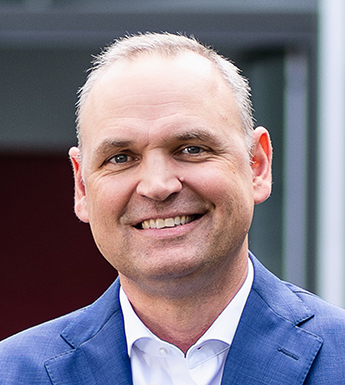Agile Change Implementation:
Ensuring capable and productive organizations under extreme conditions.
The COVID-19 pandemic suddenly put many organizations out of commission with a single stroke - organizations that have had established structures, processes and forms of collaboration in place for decades. Thus, companies are faced with the challenge of rapidly adapting to new ways of working in order to maintain their productivity. At the same time, defined processes to facilitate such a massive change process are generally missing, since the phases of change management are being cycled through faster than plans can be created. Instead of implementing clearly-defined change management strategies in a well-organized manner, companies now have to react ad hoc. That requires more flexible and pragmatic forms of change management and company management.
Adaptation instead of optimization
This is precisely where agile change comes in and it focuses on using pragmatic and creative problem solving to ensure organizations are able to act during phases of great uncertainty and to cushion the impact of cultural shocks. Reflecting on your company values and management principles provides a guideline for the flexibility that is needed and the ongoing monitoring of work methods, thus allowing for quick adjustment to all of the dynamically changing conditions during the COVID-19 pandemic.
msg advisors has developed a three-tiered approach model that helps organizations effectively find their way through and out of the crisis:
#1 Check your organization’s pulse
The massive operational changes caused by COVID-19 have left their mark on organizations. Teams and employees have to implement new work methods within incredibly short amounts of time, as well as develop and learn new principles of communication and collaboration. At the same time, these changes have invoked feelings of fear and uncertainty throughout companies and society – however, they have also given rise to new ideas and innovations.
Guided reflection (a retrospective analysis) allows teams and organizations to analyze the current mood, work methods and problem areas: What is working well in the current situation, what is not going well, what is missing? How are teams and employees doing? What is the mood and how is the collaboration between teams going? Which processes and controls are helping the company at the moment and which processes and policies no longer service a purpose at the company? Which successes can be celebrated?
#2 Adjust the vision and strategy
In contrast to when the COVID-19 pandemic first started, companies now have the opportunity to actively shape their change process and consciously decide what their organization should look like after the crisis. This opportunity should not be wasted: a well-structured change process is essential for turning the valuable impulses gained from the aforementioned organizational reflections into concrete improvements and for effectively guiding the organization through and out of the crisis. This includes a clear formulation of the “what, why and how” of the planned transformation.
An evaluation of the findings from the retrospective analyses opens up opportunities to adjust the current business strategy, project portfolio and digitalization strategy. What do you want to take with you from the current situation? For example: more home office, making sure on-site workshops and meetings have a clearer focus, new production ideas or delivery chains? What does the future look like for your employees?
#3 Implement and anchor the changes within the organization
During the COVID-19 crisis, implementing measures can only be done under exceptional conditions. That is why it is important to consider the principles of agile change implementation, so that flexible approaches and pragmatic problem solving can be employed.
In the current crisis situation, companies often have certain departments and teams with very high workloads and then teams with a reduced workload, but who could easily help implement the improvements.
msg advisors accompanies you throughout all phases of agile change implementation. You can help your company use the massive changes resulting from the COVID-19 pandemic to develop and strengthen your organization’s resilience.
Find out more

Thomas Praska
We are looking forward to hearing from you!
Further topics
-

Minimum Viable Organization
Developing hot spots of the digital organization in a targeted manner.
- 1
-

Remote Project Management
Strengthen resilience in critical phases with Project Management Factory.
- 1
-

Agility for remote success
Mastering critical situations with agile organizational principles.
- 1




